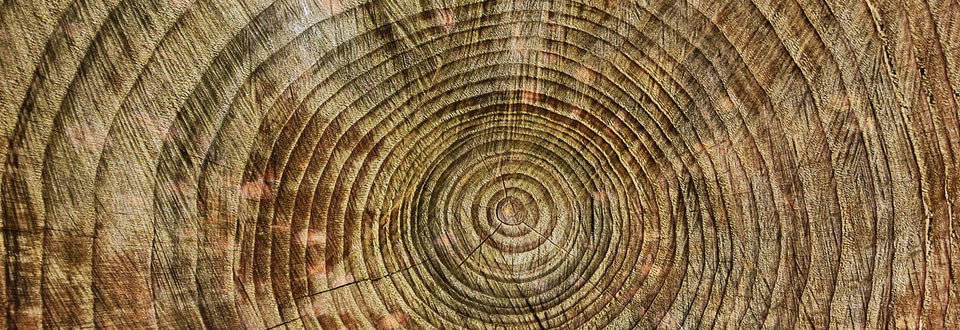Trees date back to prehistoric settlements
Dendrochronology is the most reliable method for dating prehistoric settlements in the wet area, because it is based on the measurement of the growth rings of trees.

Given the high level of conservation of timber in these sites, it is possible to determine the exact year of felling of a tree used for the construction of a hut or a fence, if the last growth ring under the bark it’s still preserved.
In temperate climates, the trees grow, forming concentric growth rings that are clearly distinguishable in the section of the trunk, each of which corresponds to a one-year life of the tree. The dating method is based on the principle that every year the trees add an extra ring which captures changes in climate and humidity.
Trees of the same species and the same age grown in areas with similar climatic conditions show in fact similar successions of the rings. The sequence of the rings is like a bar code that records the sequence of years favorable or unfavorable to the growth of the trees. The comparison of the sample analyzed with the chronological curve, drawn from the overlapping curves of thousands of trees studied, is used to determine its exact chronology.
In the Alpine region, the chronological curve is that of the oak tree that allows you to back up to 8480 BC. The oak is in fact one of the most common trees in the European territories and a tree that retains visible growth rings. Dendrochronology has allowed to date until today more than 50,000 wooden elements of the European prehistoric pile dwellings, representing an irreplaceable method for precise dating of villages, the different stages of development of villages and settlements in the history of the wetland.
Dendrochronological investigations were carried out at Palù di Livenza on 80 samples of wood ,taken from the 1992-1994 surveys, among which there were oak, hazel, maple and beech, but it was possible to obtain useful chronological elements only of the oak. Unfortunately, the data did not allow us to build a general chronology of the site, but have led to the creation of several local curves that indicate the existence of different moments of felling of trees for the construction of the facilities of the town and therefore the presence of more phases of construction in the Neolithic village.

Particularly interesting is the relative proximity of Palù to the swamp of Ljubljana in Slovenia, an area known for its many dwelling villages dating from between 4000 and 3000 BC, some of which offer a good range of dendrochronological dating. Some data obtained in the Palù and those developed for sites to Hočevarica and Spodnje Mostišce, attributable to the fourth millennium BC, were compared.
The study revealed the partial contemporaneity of Hočevarica dating with the curve obtained in the Palu from the series of oak poles found in the center of the excavations made in 1994.
« Il mondo delle palafitte: la conservazione dei resti organici Percorsi didattici »



